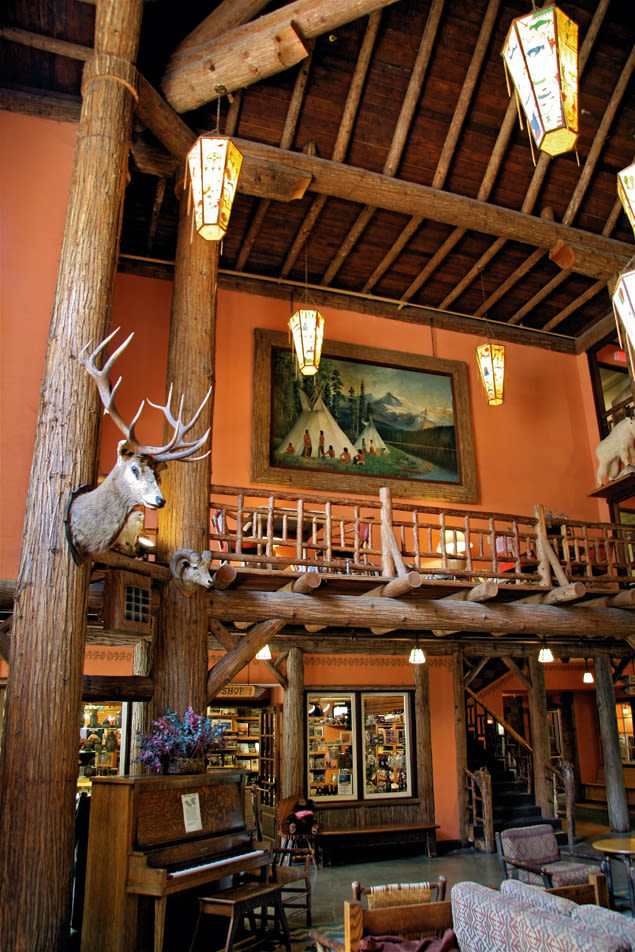The Glacier Express
ON MY FIRST MORNING in Montana’s Glacier National Park, I begin the day as I have many times before—by venturing straight into the park’s heart near Logan Pass, a gaping nook that parts the Continental Divide at some 6,600 feet in elevation.
As the park’s highest location accessible by car, the pass is a natural starting point for myriad extended backcountry destinations. But right now, I need immediate satisfaction. And by pointing my boots toward the western slope of Mount Oberlin, where a well-worn goat trail leads straight up the mountain’s 8,180-foot peak, appeasement will come quickly.
An hour later, when I crest the summit, I find what I am looking for: the spellbinding sensation of being swallowed whole by a sea of mountains. Raw, wild, and ice-gouged, to me, these peaks are the real Rocky Mountains.
I was first introduced to Glacier’s hypnotic powers some 13 years ago onboard the viewing car of the Empire Builder, an overnight train that ran—and still does—from Portland’s Union Station bound for Montana and, eventually, Illinois, seven days a week throughout the summer. At the time, I was a 20-year-old, somewhat naive University of Oregon student on my way to Glacier, sight unseen, after answering an ad placed in my college newspaper. The gig? A waiter at the Park Café and Grocery in St. Mary, just outside the park.
I could kiss that newspaper now. Each day that summer, I ditched my greasy apron and set out to scale mountains, traverse ice fields, and explore meadows dotted with confetti of orange paintbrush, pinwheels of purple asters, and matchsticks of white bear grass—all growing so close to a big sunlit Montana sky that, I swear, you could smell them baking in the thin mountain air.
It might sound silly, but, for me, the experience was transformative. And nearly every year since then—including three more summers as the Park Café’s happiest employee—I’ve been drawn back to this virtual island of primitive wilderness, just like a hapless character from Lost.
Situated in Northwest Montana, where its one-million-acre expanse hugs the Canadian border, Glacier is often referred to as the “last wild place” in the Lower 48. Teeming with old-growth trees, pristine lakes, gray wolves, grizzlies, and wolverines, this is still the country Lewis and Clark encountered more than two hundred years ago.

Lake MicDonald Lodge’s rustic interior.
Image: Alan wolf
As Glacier celebrates its 100th anniversary as a National Park this summer, it’s now home to a few creature comforts as well. Today, many of the park’s sights can be enjoyed right from your car via the famed Going-to-the-Sun Road. Starting from the rain-soaked lowlands—where Lake McDonald Lodge, a classic timber-hewn hotel, sits at the edge of Glacier’s largest lake—the road winds its way up to the Continental Divide, near Logan Pass. And for those without a car (among them me, given I still insist on taking the Empire Builder from Portland for my annual trek), the park’s fully restored fleet of 1930s-era, fire-engine red tour buses is on hand to help ferry the park’s nearly two million annual visitors to popular waypoints like Sunrift Gorge.
But to be frank, there are also other, far less flattering changes. The earth’s rising temperatures are a direct threat to the park’s trove of glaciers. At one time around 150 of the icy behemoths existed within the park boundaries (boundaries which, by the way, would neatly contain the state of Rhode Island).
Sadly, park officials estimate all of the park’s remaining 25 glaciers could vanish by the end of the decade. In fact, many of the giant ice fields I remember from my first summer here have shrunk or simply disappeared.
Receding glaciers won’t completely destroy the park’s image. (Glacier was actually named less for its glaciers than for how its mountains were formed.) The park has beauty to spare. Indeed, from my perch, high atop Mount Oberlin, these troubles seem distant. Looking over its network of glacially torn mountains, glassy lakes seemingly plucked straight from a painting, and forests so dark they glow navy blue in the shadows of tall peaks, the park I once called home looks just how I remember it. At least for now.




